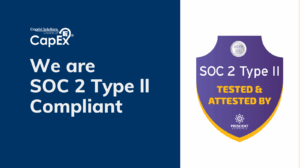Budgeting is a crucial part of any organization’s financial planning process. It helps businesses allocate resources effectively, prioritize initiatives, and set financial goals. However, there are different approaches to budgeting, and each has its advantages and disadvantages.
Two of the most common approaches to budgeting are top-down budgeting and bottom-up budgeting. In top-down budgeting, senior management creates a budget plan and then allocates funds to different departments based on their needs. In contrast, bottom-up budgeting involves individual departments or teams creating their budget plans and submitting them to senior management for approval.
So, which approach is better? Let’s take a closer.
Top-Down Budgeting
Top-down budgeting is a centralized approach to budgeting. Senior management creates the budget plan and then distributes funds to different departments or teams. This method ensures that the budget is aligned with the company’s strategic goals and objectives. It also allows senior management to have a big-picture view of the organization’s financial needs and make informed decisions.
However, top-down budgeting has its drawbacks. It can be difficult for lower-level employees to provide input or feedback, leading to a lack of buy-in and ownership. In addition, budget targets may be unrealistic or unattainable for certain departments or teams, causing frustration and demotivation.
Bottom-Up Budgeting
Bottom-up budgeting, on the other hand, is a decentralized approach to budgeting. Individual departments or teams create their budget plans and submit them to senior management for approval. This method encourages participation and collaboration, as employees have more control over their budget plans. It also allows for a more accurate assessment of departmental needs and priorities.
However, bottom-up budgeting can lead to a lack of alignment with the company’s overall goals and objectives. Individual departments may focus on their specific needs rather than the organization’s needs as a whole. There is also a risk of overspending or underfunding, as each department may not have the same level of financial expertise.
Which is Best?
Ultimately, the approach to budgeting that works best for a company depends on its goals, culture, and structure. For larger, more complex organizations, top-down budgeting may be more effective in ensuring that the budget aligns with the company’s strategic goals. In contrast, smaller, more agile organizations may benefit from a bottom-up approach that encourages collaboration and innovation.
In conclusion, neither top-down nor bottom-up budgeting is inherently better than the other. Each has its advantages and disadvantages, and companies should choose the approach that best aligns with their unique needs and goals. Regardless of the approach, the key to effective budgeting is to continuously monitor and adjust the budget based on changing circumstances and priorities.





